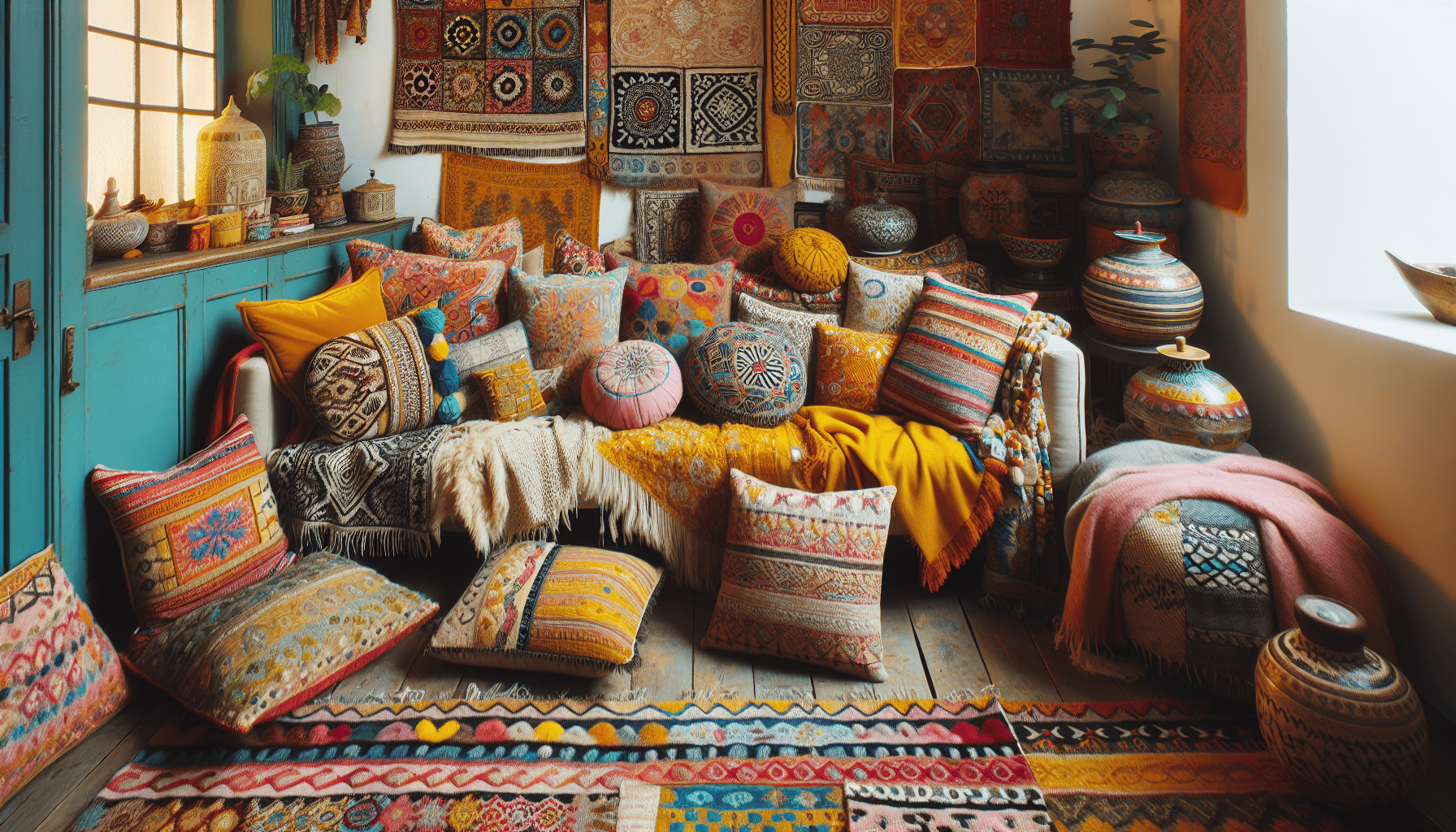Mixing textures and patterns is an art form that can transform any interior space from mundane to mesmerizing. It’s a design approach that adds depth, interest, and personality to a room, making it feel richly layered and thoughtfully curated. Here are some key techniques for mastering the art of blending textures and patterns in your interiors.
Understanding Textures
Textures refer to the visual and tactile surface qualities of an object. They can be smooth, rough, soft, hard, glossy, or matte. Incorporating various textures in a room adds visual interest and physical comfort. Start by mixing materials such as wood, metal, fabric, and glass. For instance, pair a sleek, glass coffee table with a plush, velvet sofa, or complement a rough-hewn wooden table with smooth ceramic objects. This juxtaposition creates a balanced and harmonious environment.
Playing with Patterns
Patterns are all about repetition of shape, form, or motif and can be found in textiles, wallpapers, and rugs. Patterns can set the tone of a room, from bold and vibrant to subtle and sophisticated. When mixing patterns, consider scale and color. Ensure that one pattern dominates while others play a supportive role. For example, a large floral-patterned rug can be complemented with smaller, geometric cushions or striped curtains in similar hues. This layering approach keeps the space from feeling chaotic.
Harmonizing Colors and Themes
A cohesive color palette is crucial when blending textures and patterns. Choose a base color and build upon it with complements or contrasts that create a seamless flow. Opt for varying shades of the same hue to maintain harmony. Additionally, unify your textures and patterns under a common theme, such as Scandinavian minimalism or bohemian elegance, to give your space a cohesive story and aesthetic direction.
Layering Techniques
Layering is essential to combining different textures and patterns effectively. Start with a base layer, such as a neutral wall color or large piece of furniture, then gradually add layers of varying textures and patterns. Incorporate textiles like throw blankets, pillows, and rugs to add depth. Metallic accents or natural elements, like plants or stones, can serve as connecting elements, bridging the gaps between diverse textures and patterns.
Focus and Balance
To prevent a space from becoming overwhelming, maintain focal points and balance. Select one or two areas where patterns and textures converge, such as a feature wall or a statement piece of furniture. Balance complex patterns with simpler, solid-colored or lightly textured elements. This approach creates breathing room and ensures that the room feels inviting rather than cluttered.
Experiment and Personalize
Finally, don’t be afraid to experiment and let your personality shine through. Try different combinations to discover what feels right for your space. Use textures and patterns to express your unique taste, whether that means antique tapestries mixed with modern art or a lively blend of tropical prints and serene, natural textures.
By applying these techniques thoughtfully, you can create an interior setting that is not only visually appealing but also deeply personal and inviting. Allow your creativity to flow, and enjoy the process of mixing textures and patterns to craft spaces that are uniquely yours.
